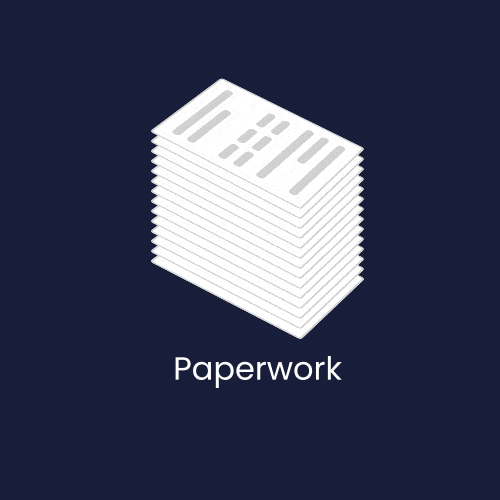In today’s rapidly evolving global marketplace, businesses face increasing pressure to optimize supply chains and streamline operations. From managing orders to handling transportation, a strong logistics management system is more important than ever. The right solution can drive operational efficiency, reduce costs, and improve customer satisfaction.
However, with countless options available, identifying the best fit requires careful evaluation. This guide will help you understand how to choose the right logistics management software. It includes a real-world case study for support.
Why Your Business Needs Logistics Management Software
In a competitive global market, businesses face increasing pressure to streamline supply chains and logistics operations. The absence of a robust logistics management system software often leads to delivery delays, high operational costs, inventory inaccuracies, and unsatisfied customers. Implementing the right logistics solution can help businesses overcome these challenges by integrating and automating supply chain processes.
10 Reasons to Implement Logistics Management Software
Logistics management software offers a range of benefits that streamline operations, improve efficiency, and enhance customer satisfaction. Here’s why you should consider implementing this powerful tool:
1. Streamlined Operations:
Automating important logistics tasks like order processing, tracking, and route planning helps daily operations run smoothly. This saves time and cuts down on mistakes.
2. Real-Time Visibility:
With logistics software, users gain full visibility into their shipments and inventory in real time. This transparency helps track goods and manage expectations, improving overall communication.
3. Cost Savings:
Logistics software helps save money by improving routes and automating inventory management. This reduces extra costs like fuel and storage fees, leading to big savings over time.
4. Faster Deliveries:
Route optimization features enable quicker and more efficient deliveries, ensuring that goods reach their destinations faster and more reliably, boosting customer satisfaction.
5. Data-Driven Insights:
Analytics and reporting tools in logistics software give users valuable insights. These insights help users find inefficiencies and make informed decisions to improve operations.
6. Minimized Errors:
Automation reduces the likelihood of manual errors like incorrect shipments or order mix-ups, ensuring accuracy and reliability throughout the logistics process.
7. Enhanced Customer Experience:
By enabling accurate, timely deliveries and real-time tracking, logistics software boosts customer satisfaction, helping businesses build trust and loyalty.
8. Scalability:
As your business grows, logistics software easily adjusts to manage more orders, complex routes, and larger inventory. It does this without needing extra manual work.
9. Improved Communication:
Logistics software fosters better communication between teams, suppliers, and third-party vendors, reducing delays and enhancing collaboration for smoother logistics management.
10. Environmental Benefits:
Optimized routes and efficient resource allocation help reduce fuel consumption and carbon emissions, supporting more sustainable and eco-friendly logistics practices.
Using logistics management software helps businesses work better and faster. It allows them to serve customers reliably. At the same time, it reduces costs and supports sustainability.
6 Features to Look for When Selecting Logistics Management Software
Selecting the right logistics management software is crucial for streamlining supply chain operations and enhancing overall business performance. The best solution should automate daily logistics tasks. It should also offer tools for growth, integration, and data-based decisions. Below are the key features to consider when evaluating logistics software.
1. Comprehensive Order and Inventory Management
A robust order management system streamlines order processing from placement to delivery. It provides real-time inventory visibility, preventing stock discrepancies and backorders. Integration with warehouse management systems ensures accurate inventory tracking and efficient warehouse operations. This seamless integration reduces manual handling errors and accelerates order fulfillment, improving overall supply chain efficiency.
2. Advanced Transportation and Fleet Management
Efficient transportation is vital for timely deliveries. Advanced transportation management software optimizes dispatch operations by automating load planning, scheduling, and delivery management. With fleet management software, businesses can monitor vehicle performance, schedule maintenance, and manage driver activities, ensuring consistent service levels. Integrating route optimization software further enhances logistics efficiency by identifying cost-effective delivery routes, reducing fuel usage, and improving on-time deliveries.
3. Real-Time Tracking and Visibility
A modern logistics tracking system offers GPS-enabled real-time tracking of shipments. This feature allows businesses and customers to monitor delivery progress, anticipate delays, and receive timely notifications. Real-time visibility ensures accountability across the supply chain, reducing the risk of misplaced shipments and improving customer satisfaction through proactive communication.
4. Seamless Integration Capabilities
Integration with existing systems such as ERP, CRM, and warehouse management systems is essential. This interoperability enables data flow between departments, improving decision-making and operational transparency. Software with API support facilitates custom integrations, allowing businesses to tailor solutions to meet unique logistics challenges.
5. Scalability and Flexibility
Choosing cloud-based logistics software provides scalability, enabling businesses to expand without major infrastructure changes. Cloud solutions provide flexible setups that can change with supply chain needs. This ensures long-term efficiency and strength during market changes.
6. Data Analytics and Reporting
Advanced analytics and reporting tools offer actionable insights into supply chain performance. Customizable dashboards and KPIs allow businesses to track delivery times, fleet efficiency, and operational costs. By leveraging data-driven decisions, companies can continuously optimize logistics processes and achieve cost savings.
Case Study: How a Logistics Provider Transformed Operations with Logistics Management Software
Overview:
A leading third-party logistics (3PL) provider specializes in retail and e-commerce fulfillment. As it expanded, it encountered significant operational challenges. Increasing order volumes, complex routing requirements, and inefficient fleet utilization were hindering growth and customer satisfaction.
Challenges:
The logistics provider encountered several operational hurdles:
- Lack of real-time logistics tracking, resulting in poor visibility and delayed issue resolution.
- Inefficient routing processes, leading to increased fuel consumption and delivery delays.
- Manual order management procedures that caused frequent errors and slower fulfillment.
- Underutilized fleet resources, contributing to elevated operational expenses.
Solution Implemented:
To overcome these challenges, the company adopted a comprehensive logistics management system software that integrated order management, route optimization, and real-time tracking features. This solution provided seamless system integration and enabled real-time monitoring of logistics operations.
Key Features Utilized:
- Automated order management workflows to minimize manual errors and streamline processing.
- Advanced route optimization software to improve fleet efficiency and cut fuel costs.
- Real-time logistics tracking system to enhance shipment visibility and proactive issue resolution.
- Data-driven analytics dashboards for continuous performance assessment and strategic decision-making.
Results:
- 25% Reduction in Delivery Times due to efficient route planning and dispatch automation.
- 30% Decrease in Operational Costs by maximizing fleet utilization and reducing fuel expenses.
- Improved customer satisfaction through timely deliveries and proactive communication enabled by real-time logistics tracking.
- Scalable operations that allowed the company to effectively manage peak demand without additional resources.
How to Evaluate Logistics Software Providers
Evaluating logistics software providers requires a structured approach:
1. Define Business Needs
Businesses need to find their logistics problems. These could be late deliveries, poor order management, or no shipment visibility. Understanding these needs will guide the search for software solutions offering relevant features.
2. Compare Features and Scalability
Assessing whether the software can scale with business growth is crucial. Companies in certain industries, like third-party logistics, should seek features that fit their operational needs.
3. Assess Integration and Flexibility
Ensure the software integrates seamlessly with existing systems, such as ERP, CRM, and warehouse management systems. Customization options and API support are also essential for handling unique workflows.
4. Analyze Cost vs. ROI
Businesses should compare software costs with potential ROI. Features like route optimization software and fleet management software offer significant operational savings by improving delivery efficiency and reducing fuel expenses.
5. Evaluate Support and Training
Reliable customer support and comprehensive training programs are vital. These services ensure smooth implementation and continuous improvement, helping businesses maximize software benefits.
Selecting the right logistics management software is vital for achieving supply chain efficiency, cost savings, and superior customer satisfaction. A solution that integrates real-time logistics tracking, order management, and route optimization can transform logistics operations, as demonstrated by MetroLogistics. By focusing on scalability, integration, and data-driven insights, businesses can position themselves for long-term success.
About nuVizz
nuVizz offers industry-leading logistics management solutions that empower businesses to optimize supply chains and enhance customer experiences. With advanced features like real-time tracking, route optimization, and seamless system integrations, nuVizz helps companies achieve operational excellence.

